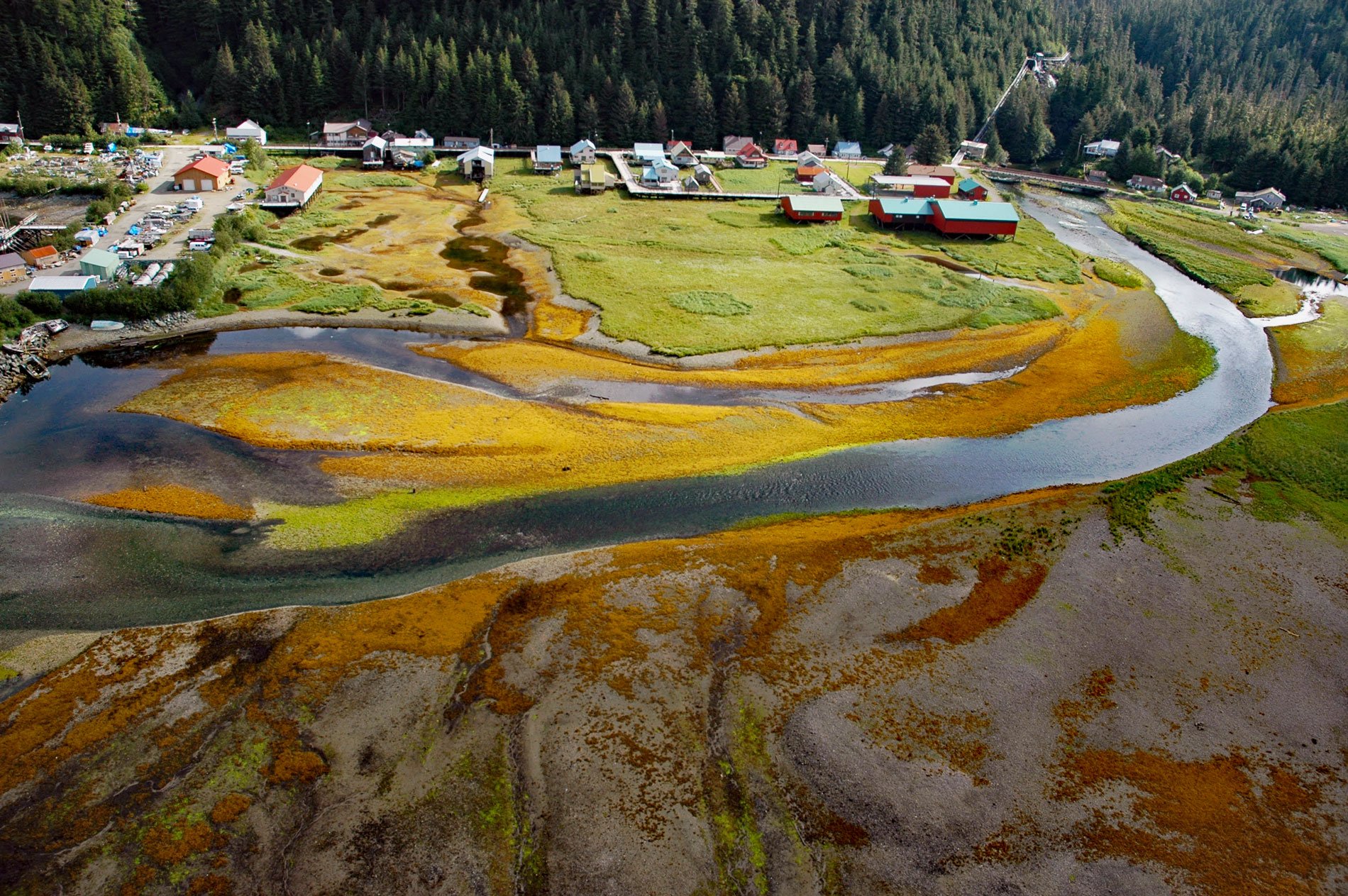Pelican is a small community located on the east side of Lisianski Inlet on the north coast of Chichagof Island in the Alexander Archipelago of Southeast Alaska, about 71 miles (114 km) north-northwest of Sitka and 17 miles (27 km) south of Elfin Cove, Alaska. Lisianski Inlet is a deep protected embayment about 25 miles (40 km) long that connects Lisianski Strait to the west and Cross Sound to the north. The name was published by the U.S. Coast and Geodetic Survey in 1908 and is presumably for Yuri Fedorovych Lysianskyi who was an officer and explorer in the Imperial Russian Navy of Ukrainian origin. He headed the first Russian circumnavigation aboard the Neva and has many places and features named after him. Chichagof Island, named Shee Kaax by the local Tlingit people, is the fifth-largest island in the United States and has a coastline of 742 miles (1196 km). This island is named after Admiral Vasili Chichagov, a Russian Arctic explorer, who never actually visited Alaska. The entire island lies within the Tongass National Forest and the western coastal portion is a designated wilderness area. Chichagof Island reputedly has the highest population of bears by area of any place on Earth. The communities of Hoonah, Tenakee Springs, Elfin Cove, and Pelican are all located on Chichagof Island and close to the rich fishing grounds of Cross Sound and the Gulf of Alaska. Pelican is situated about 14 miles (23 km) from Cross Sound and 18 miles (29 km) from the Gulf of Alaska via Lizianski Strait.
Several gold mining prospects were established in Lisianski Inlet in the early 1900s. Jack Cann began developing the Apex El Nido mine when gold-bearing veins were discovered in 1919-1920 at an elevation of about 1,050 feet (320 m) at the head of Cann Creek on the western shore of Lisianski Inlet about 4 miles (6.4 km) southeast from the entrance to Lisianski Strait. The Golwin Group of claims were owned by Frank Shotter, Jack Ronning, and Hjalmer Mork of Hoonah, Alaska. They built a camp on the beach at the mouth of Cann Creek that included a 5-ton Gibson stamp mill, a 30-inch Pelton wheel with a 15 KW 120-volt generator, 400 feet of wooden flume, and a 24-inch gauge track from the beach to the tunnel. The mines were in production from 1920, when the veins were discovered, until 1939, when the mines closed. There were a total of about 1 mile (1.6 km) of workings. The Apex Mine had 4 levels and about 3,600 feet (1,097 m) of workings, and the El Nido had about 1,800 feet (549 m) of workings. Assays of the Apex lode averaged about 1.9 ounces (54 g) of gold per ton in underground workings and about 4.57 ounces (130 g) of gold per ton in surface outcrops. Assays of the El Nido vein were a little lower, but some outcrop samples ran as much as 24.2 ounces (686 g) of gold per ton. The Apex and El Nido mines produced a cumulative total of about 17,000 ounces (482 kg) of gold and 2,400 ounces (68 kg) of silver in the periods 1924-28, 1934-35, and 1937-39. In 1938, Kalle (Charley) Raatikainen was an Alaskan pioneer and fish buyer from Sitka looking for a place to build a cold storage plant closer to the fishing grounds of Cross Sound, and the early miners in Lisianski Inlet brought Raatikainen to the future townsite of Pelican.
Raatikainen was buying fish from salmon trollers strung along the west coast of Chichagof and Yakobi Islands. Once he emptied the hold of the last fishing boat, he would turn and head 80 miles (128 km) southeast to a cold storage facility in Sitka. After unloading the catch Raatikainen would purchase and load groceries and gear for the trollers then head back north. Soon he became determined to solve the logistical problems by building a cold storage facility closer to the fishing grounds. He was well acquainted with the miners at Cann Creek and sought their input on where to locate a cold storage plant, and he was taken to the future site of Pelican. The site had deep water close to shore, a somewhat protected harbor, and a stream with a lake that could power a small hydroelectric dam. Raatikainen formed a corporation and organized fishermen and some employees to begin construction at the end of the fishing season. On September 26, 1938, the Pelican arrived with a work crew to start building. The steamer Tongass arrived with the lumber and materials. Tongass was owned by the Alaska Transportation Company and carried passengers, mail, and general cargo to Alaskan port towns and returned with a cargo mainly composed of frozen fish. The ship was later sold and renamed Wapama and was a museum ship in San Francisco until 2011. During these years the community was called Finn Town or Pelican City. A pile driver was towed in to build a wharf and an air compressor and jackhammers were used to drill the rock and blast out a foundation for the cold storage building. A sawmill was brought in to produce the lumber needed for a boardwalk and homes. Most of the community is built on pilings over the saltmarshes and a boardwalk serves as the town’s main thoroughfare. In 1939, a post office was established with the name Pelican. By 1943, the town had a small hydroelectric dam, a cannery, a small sawmill, a school, and a hotel. Read more here and here. Explore more of Pelican here:

